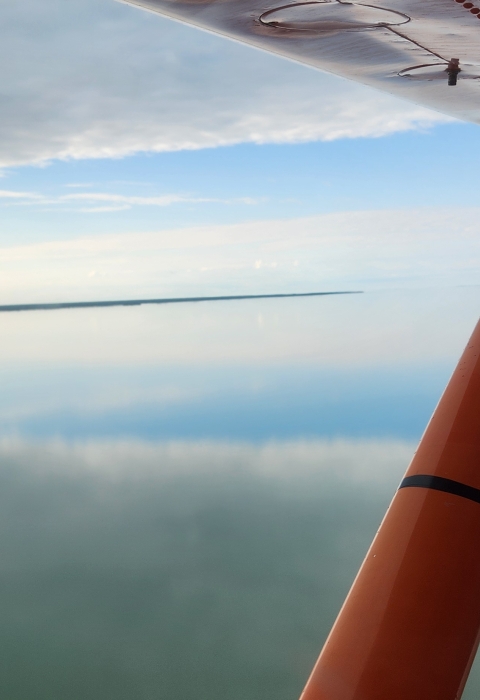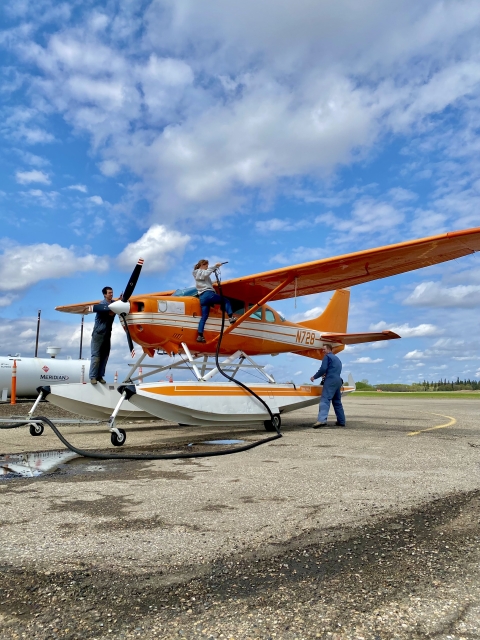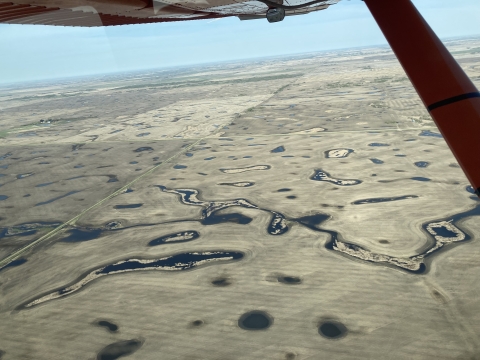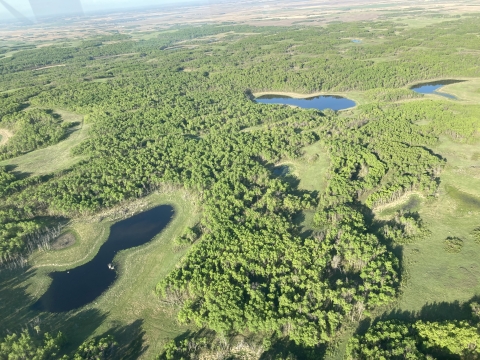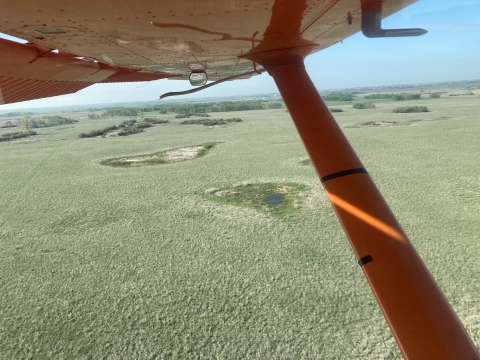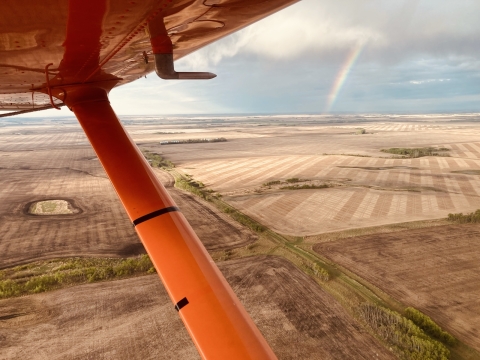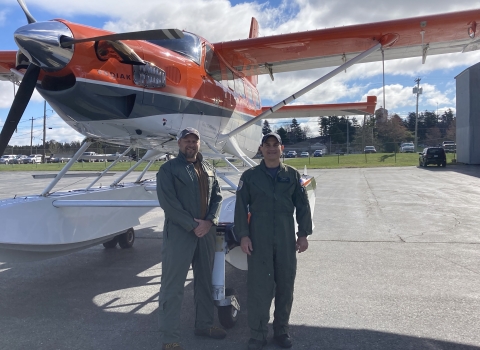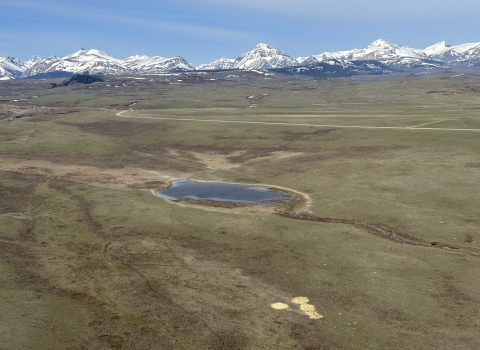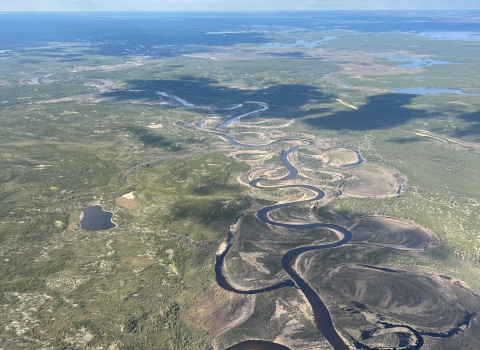Early waterfowl survey conditions appear to have deteriorated this year compared with wetland conditions in 2023 due to the multi-year drought that’s affected the prairie region of Canada. While last year Manitoba had some holdover soil moisture from previous years, the reserve looked to be depleted in 2024. Conditions are the driest we’ve seen them in the last twelve years of flying this survey area. This is despite somewhat normal precipitation during the late winter/spring. It appeared that any accumulated precipitation during the winter and early spring melted quickly due to above normal temperatures and was quickly absorbed given the very low soil moisture in the region.
Throughout the survey and in all strata, we observed many small wetlands completely dried up, especially in southeastern Saskatchewan. Larger semi-permanent wetlands, as well as permanent waterbodies, were experiencing very low water levels and vegetation was abundant throughout most of the wetland habitats. Wetlands were not only displaying wide vegetative margins along their perimeters, but most wetlands actually had vegetative growth throughout the entire waterbody, including the central and normally deeper areas of the wetlands.
This made scanning wetlands for waterfowl from the air a bit more difficult! Our eyes worked overtime, and our heads were often aching by the end of the survey day! Fortunately, the month of May did bring a shift in the weather pattern and the region finally received some much-needed precipitation. In fact, by the end of May we observed abundant runoff and even some standing water is areas that had been extremely dry at the start of the survey season.
I had the pleasure of surveying with Stacy Salvevold again this year. She is a wildlife biologist with the Fergus Falls Wetland Management District in Minnesota. I truly enjoy working with her and I appreciate the extensive knowledge and expertise that she brings to the survey each year. She has a discerning eye when it comes to wetland ecosystem health and is a true champion for wetland conservation and rehabilitation with the U.S. Fish and Wildlife Service both on the ground and in the air!
